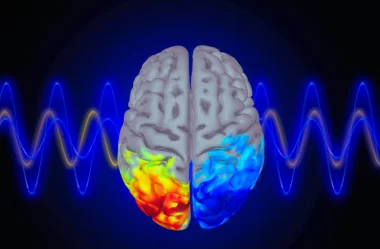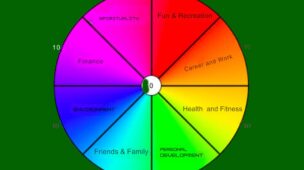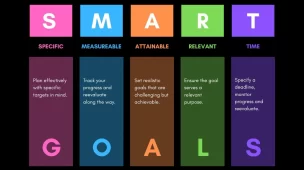Introduction to Brain Waves
Brain waves are electrical impulses in the brain, signifying the sum of millions of neurons firing together. They are typically divided into five main categories—each associated with different mental states and activities. Understanding these can provide insights into a person’s mental state and help diagnose neurological conditions.
Understanding Brain Waves
Type 1: Alpha Waves
Alpha waves (8-12 Hz) are present during calm, relaxed yet awake states. They are dominant during quietly flowing thoughts, and in some meditative states. Alpha waves aid in mental coordination, calmness, alertness, mind/body integration and learning.
Type 2: Beta Waves
Beta waves (12-38 Hz) are high frequency and occur when we are actively thinking, problem-solving, or doing active mental activity. They are characteristics of a strongly engaged mind, with neurons firing abundantly in sync.
Type 3: Gamma Waves
Gamma waves (>38 Hz) relate to simultaneous processing of information from different brain areas and are involved in learning and memory. They are thought to be the brain’s optimal frequency for cognitive functioning.
Type 4: Theta Waves
Theta waves (4-8 Hz) are frequent during light sleep and REM dreams, and are also typical in deep meditation. Theta is driven by emotional surges, intuition, and creativity, making it essential for emotional expression. (The Genius Wave)
Type 5: Delta Waves
Delta waves (0.5-4 Hz) are the slowest brain waves, prominent during dreamless sleep and in very deep, transcendental meditation where awareness is fully detached. Delta is associated with healing and regeneration, hence being crucial in deep sleep.
How Brain Waves Are Measured
The Role of EEG
Electroencephalography (EEG) is the most common method used to explore brain waves. It involves placing small, flat metal discs (electrodes) on the scalp. The brain’s electrical charges are then amplified and recorded graphically by a machine.
Other Technologies
Aside from EEG, other technologies such as Magnetoencephalography (MEG) and functional Magnetic Resonance Imaging (fMRI) also play significant roles in measuring brain activity. MEG detects magnetic fields produced by neural activity, while fMRI looks at changes in blood flow in the brain to detect areas of activity.
The Impact of Brain Waves on Health
Brain waves are not just random electrical activity; their patterns are closely linked to our mental health, physical well-being, and overall performance.
Mental Health
Abnormalities in brain wave patterns can be indicative of various mental health issues. For example, irregular alpha waves could suggest underlying stress or anxiety, whereas theta waves are often elevated in individuals who experience depression or ADHD. By understanding these patterns, professionals can target treatments more effectively.
Physical Health
Brain waves also affect physical health. For instance, delta waves facilitate healing and pain relief, important during sleep. Enhanced delta wave production can improve sleep quality, thus promoting better overall health.
Brain Waves and Meditation
Meditation has been shown to alter the frequency and amplitude of brain waves. Engaging regularly in meditation practices can increase alpha and theta waves, thus promoting relaxation and reducing stress.
Techniques and Benefits
Techniques such as mindfulness meditation, focused attention, and transcendental meditation have been seen to enhance alpha and theta wave activity. These practices not only help in reducing stress and anxiety but also improve creativity, mood, and emotional stability.
Future of Brain Wave Research
The exploration of brain waves holds tremendous potential for future health innovations. Understanding brain waves better can help in developing new treatments for mental health disorders, enhancing cognitive abilities, and even potentially manipulating brain functions as needed for better health outcomes.
Innovative Treatments
Research into brain waves may lead to breakthrough treatments for conditions like epilepsy, depression, and other mental health disorders. For example, using neurofeedback therapy, individuals can learn to change the frequencies of their brain waves actively, which can help manage their symptoms effectively.
Neurofeedback
Neurofeedback involves measuring an individual’s brain waves and providing real-time feedback to help them achieve certain mental states. This technique is increasingly used for treating ADHD, anxiety, and specific types of neurological disorders.
Conclusion
Understanding brain waves enriches our knowledge of the human brain and its comprehensive functions. By harnessing the power of these waves through technologies like EEG and neurofeedback, we can not only explore but potentially enhance human mental and physical health. As research progresses, the implications for medical treatments and cognitive enhancements are promising.
Brain waves are electrical impulses in the brain that demonstrate the activity of neural circuits. They are categorized into five types: Alpha, Beta, Gamma, Theta, and Delta, each associated with different states of consciousness.
Abnormal patterns in brain waves can indicate mental health issues such as anxiety, depression, or ADHD. Understanding and modifying these patterns through therapeutic techniques can help alleviate symptoms.
Yes, techniques such as meditation and neurofeedback allow individuals to influence their brain waves actively. This can help achieve relaxation, enhance focus, and treat neurological disorders.
Neurofeedback is a type of biofeedback that uses real-time displays of brain activity—most commonly EEG—to teach self-regulation of brain functions. It is used to treat various psychological and brain-based conditions.
Meditation can increase the production of alpha and theta waves, which promote relaxation and are linked to creativity and emotional stability. Regular practice can lead to long-term benefits in brain function and emotional health












